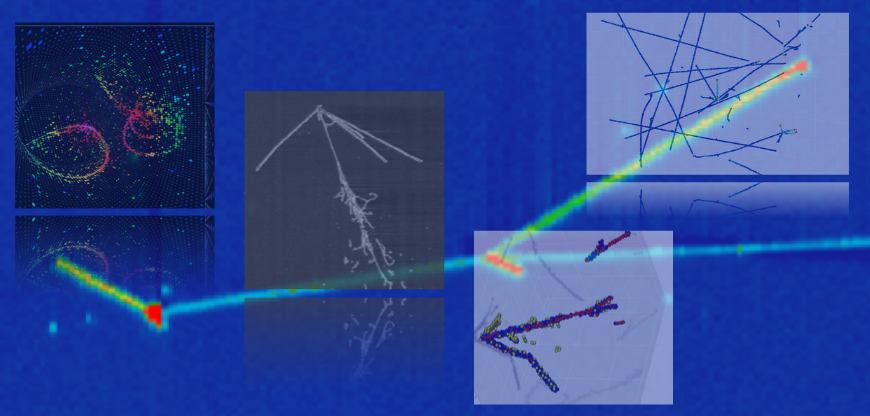Description
KATRIN and ML based end-to-end data reconstruction in SBN and DUNE-ND: LArTPCs with high pile-ups
The Karlsruhe Tritium Neutrino (KATRIN) experiment probes the effective electron anti-neutrino mass by precisely measuring the tritium beta-decay spectrum close to its kinematic endpoint.
A world-leading upper limit of $0.8 \,$eV$\,$c$^{-2}$ (90$\,$\% CL) has been set with the first two measurement campaigns.
Subsequent improvements in operational conditions and a substantial increase in...
The DUNE near detector is employing new technologies in Liquid Argon Time Projection Chamber (LArTPC) detection methods, including a 3D charge pixel readout, and is modularized into a 5x7 rectangular grid of TPCs. A smaller 2x2 prototype is nearing testing in the NuMI neutrino beam at Fermilab and we are faced with reconstructing the modularized, 3D LArTPC images. While a chain of machine...
Generating simulation data for future and current LArTPC experiments requires addressing several challenges, such as reducing computation time and the expression of detector model uncertainties. Inspired by the success of recently developed generative models to produce complex, high-dimensional data such as natural images, we are exploring how these methods might be applied to LArTPCs. Initial...
The Short-Baseline Near Detector (SBND) is a 100-ton scale Liquid Argon Time Projection Chamber (LArTPC) neutrino detector positioned in the Booster Neutrino Beam (BNB) at Fermilab, as part of the Short-Baseline Neutrino (SBN) program. Recent inroads in Computer Vision (CV) and Machine Learning (ML) have motivated a new approach to the analysis of particle imaging detector data. SBND data can...

